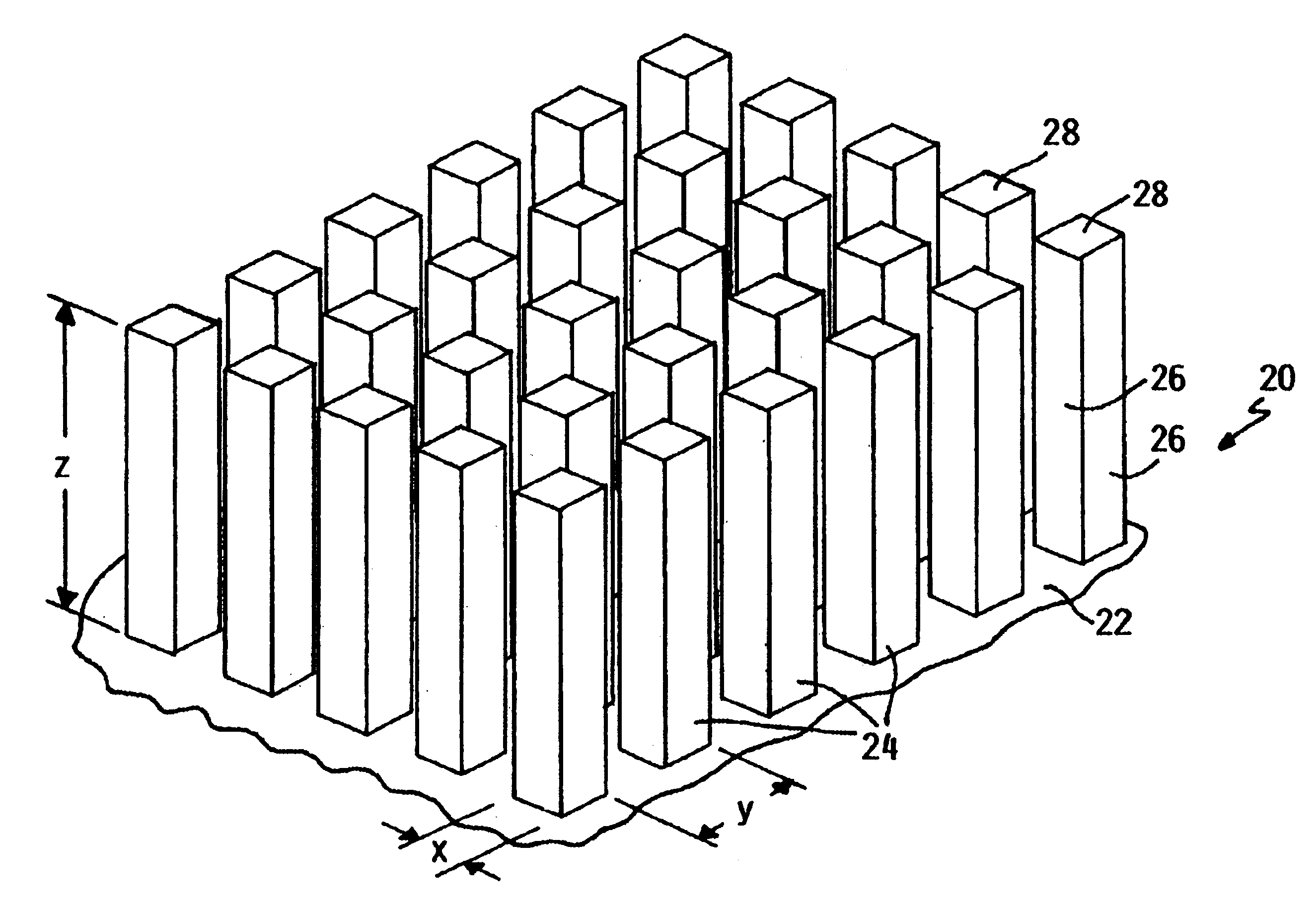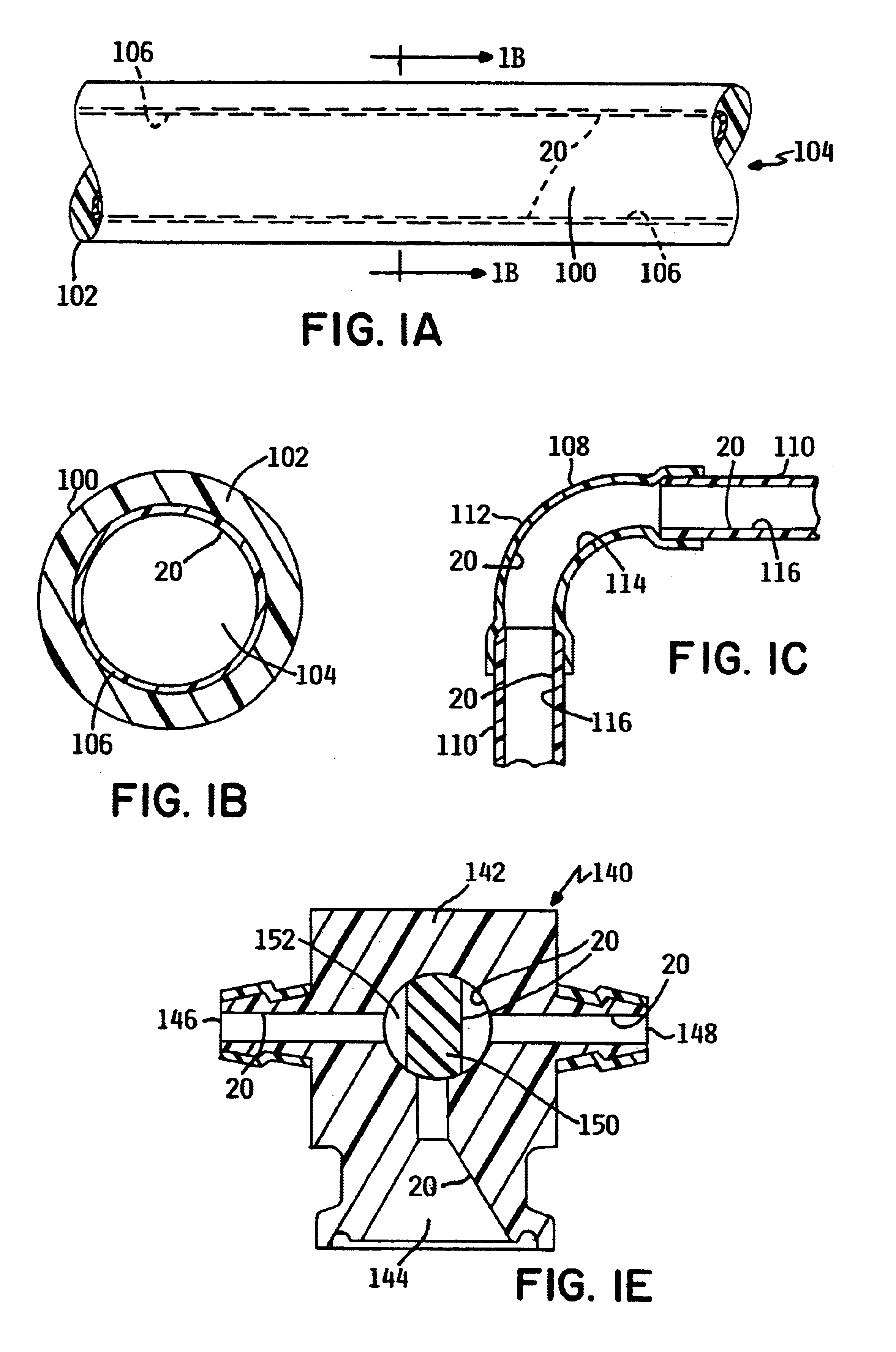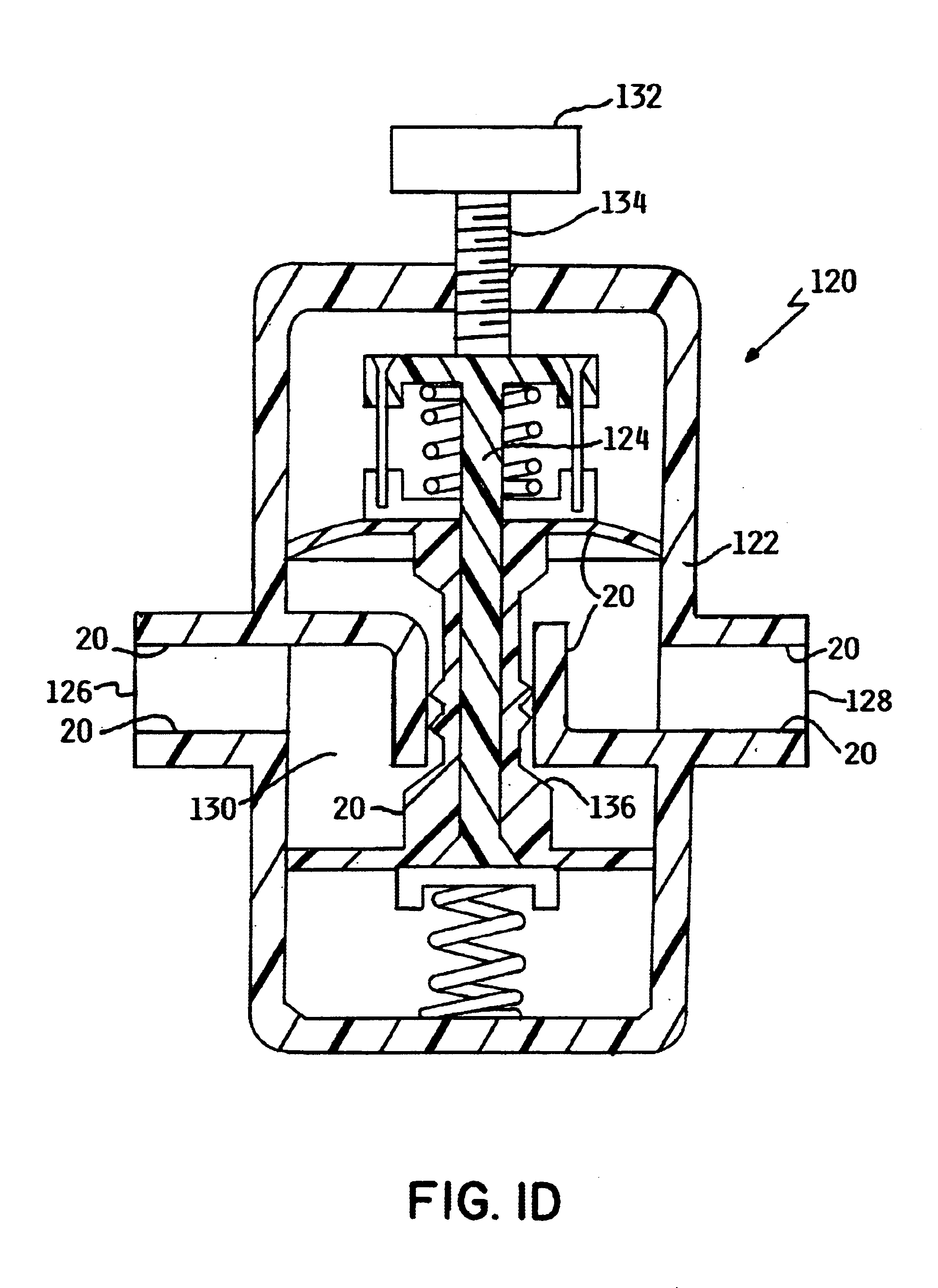Fluid handling component with ultraphobic surfaces
a technology of fluid contact surface and handling component, which is applied in the direction of conveyors, lighting and heating apparatus, laboratory glassware, etc., can solve the problems of reducing the fluid flow rate through the system, increasing energy, and reducing the fluid flow rate, so as to improve the fluid flow throughput, reduce the friction characteristics, and improve the fluid flow. the effect of reducing the energy consumption
- Summary
- Abstract
- Description
- Claims
- Application Information
AI Technical Summary
Benefits of technology
Problems solved by technology
Method used
Image
Examples
Embodiment Construction
For the purposes of the present application, the term “fluid handling component” refers broadly to pipe, tubing, fittings, valves, flowmeters, tanks, pumps, and any other device or component that may be used to handle, transport, contain, or convey a fluid. The term “fluid contact surface” refers broadly to any surface or portion thereof of a fluid handling component that may be in contact with a fluid. The term “fluid handling system” refers to any fluidly interconnected arrangement of fluid handling components.
Various embodiments of fluid handling components according to the present invention are depicted in FIGS. 1a-1g. In FIGS. 1a and 1b, a length of tubing 100 has a body 102 with a bore 104 defined therethrough. Substrate layer 106 is disposed so as to line bore 104. Ultraphobic fluid contact surface 20 is formed on substrate layer 106 and faces inwardly so as to contact fluid flowing through bore 104. Substrate layer 106 may be applied to body 102 by film insert molding as dis...
PUM
 Login to View More
Login to View More Abstract
Description
Claims
Application Information
 Login to View More
Login to View More - R&D
- Intellectual Property
- Life Sciences
- Materials
- Tech Scout
- Unparalleled Data Quality
- Higher Quality Content
- 60% Fewer Hallucinations
Browse by: Latest US Patents, China's latest patents, Technical Efficacy Thesaurus, Application Domain, Technology Topic, Popular Technical Reports.
© 2025 PatSnap. All rights reserved.Legal|Privacy policy|Modern Slavery Act Transparency Statement|Sitemap|About US| Contact US: help@patsnap.com



